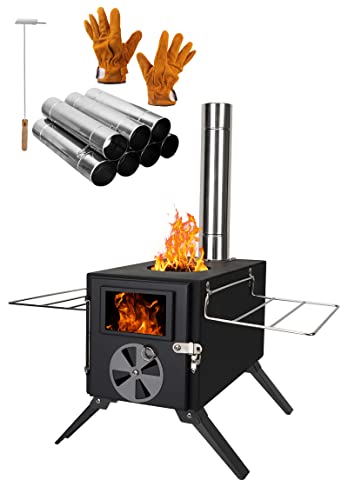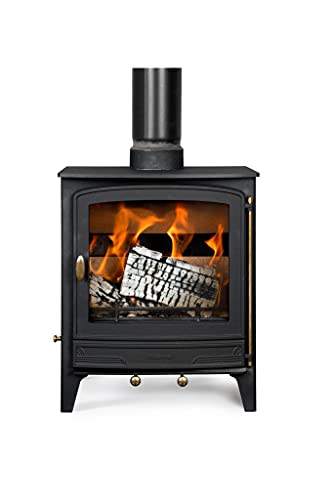What Is Woodburning Stove? To Make Use Of It
페이지 정보

본문
 How to Properly Operate a Woodburning Stove
How to Properly Operate a Woodburning Stovesmall wood burner Wood Burning Stove Uk (Www.Metooo.Io) stoves are an affordable and cozy method to heat the home. However, the smoke they produce can be harmful to health. It is important to know how these appliances operate and to use them correctly.
A lot of modern stoves rely on secondary or catalytic combustion to control their emissions. But older stoves and open fires produce large amounts of particulates.
The firebox
The firebox is the heart of any fireplace system. It's where you create a fire to heat your home and provide ambiance. It's a simple concept, but there are many important details that must be accounted for to keep your wood burning stove safe and efficient.
The firebox is thought of as an open-air combustion chamber with walls and lid. Most fireplaces come with a prefabricated metal firebox or a masonry firebox. The type of box you choose depends on your personal preferences and the kind of fireplace you have.
The majority of wood-burning stoves employ an air flow that is constant to create the fire and burn the fuel. Fresh air is drawn through adjustable dampers that are located inside the stove's doors. This lets the fuel burn efficiently and helps reduce toxic gases that are caused by unburnt or incomplete combustion. The exhaust gases will then be drawn up the chimney and safely away from your home.
Modern stoves with catalytic secondary combustion use a special catalyst that allows the unburned gasses to produce additional heat. This creates a cleaner and less polluting smoke than traditional wood stoves without secondary combustion. Modern non-catalytic stoves are available, but they're usually less efficient than stoves that have secondary combustion catalytically.
Some wood-burning stoves have a backboiler that can be used to heat water in addition to space heating. These stoves are called "hybrids" or "combination". They are in use since the beginning of the 20th century.
Wood burning stoves should only be used with well-seasoned wood. Freshly cut (green) wood has a high content of moisture, which can cause low flue temperatures as well as excessive creosote buildup in the chimney. This can cause chimney fires that cause damage to the stove and can be hazardous to your family's health.
If you are looking for an expert who can examine your wood burning stoves uk-burning stove or do firebox repairs, ensure that the chimney technician you choose has CSIA certification and also has testimonials from their customers on their website. Find out their rates, and what type of work they do.
The ventilation pipe
Ventilation is required for wood stoves in order to remove fumes and keep the home healthy and warm. Ventilation is required to remove carbon monoxide and nitrogen dioxide from the combustion process. It also helps reduce air pollution and heat loss to the outdoor. best wood stoves for tents, gas and pellet stoves all have different requirements for venting. It is important to maintain the stove's venting systems on an an annual basis for security and efficiency.
The ventilation system is made up of the firebox and the vent pipe. The ventilation pipe and chimney work together to create draft, drawing smoke from the stove through the fireplace to the outside air. The difference in temperature and densities between the hot wood smoke and cold outside air creates draft. The more hot the smoke, the more it is able to rise through the chimney and vent pipe.
Most modern wood stoves have been certified as low-emission models by the EPA. This means that they emit far fewer pollutants than older models, and contribute to global warming as well as other environmental issues. The majority of modern wood stoves for sale stoves come with pollution control systems to limit the amount of emissions while making sure that they burn efficiently.
Older stoves with open flues generate more carbon dioxide. This is a poisonous gas that is toxic and cannot be escaped into your home. Carbon monoxide can be a source when the chimney is dirty or if there is inadequate ventilation. Installing carbon monoxide alarms inside your home is therefore essential.
The distance you measure is between the chimney's opening in the wall or ceiling and the location where the wood stove is on the floor. By multiplying this measurement by 2 will provide you with the minimum length of stovepipe you need. You can use single-wall or double-wall stovepipe and must be aware of the proper clearances from combustibles with either type.
The stove's air vent should be adjusted when it first starts to light up and maintained until a stable flame is created within the stove and its combustion process has stabilized. It is recommended to avoid using wood briquettes in the stove, since they are not logs, and could contain volatile chemicals that could cause the air vent to malfunction and lead to a risky situation.
The chimney
The chimney is a complicated system that requires careful care. From top to bottom, the chimney is made up of a number of important components each of which is crucial to ensure that your stove works efficiently and safely.
The firebox, ventilation pipe and chimney work together to exhaust the combustion gases produced by your woodburning stove the outside. This is crucial to reduce carbon dioxide levels and to prevent harmful emissions. To accomplish this, the chimney and flue must to be sufficiently hot to allow the gasses out of the fireplace, without cooling. This is achieved by using a woodburning stove that has high heat output and by adding regularly new logs to the fire.
The majority of modern woodburning stoves are built to work with a chimney that is taller than older models in order to get a better draft effect. This can be a problem in the event that your chimney's height exceeds the maximum for your location. In this case the chimney could be competing with the house's stack for airflow, causing the gases to cool before leaving. This can restrict the flow of gases and lead to creosote accumulation which could pose a fire danger.
The most common mistake homeowners make is to open the fireplace door and close it frequently. This can negatively affect the combustion. It is important to keep the fireplace door as closed as possible, and only open it when you need to add firewood or ash. If you leave the door open for too long allows the hot air to escape from the stove, which causes the logs to cool and more difficult to light. It releases volatile compounds that are not burned into the room.
Another common error that people make is to use different kinds of combustibles with their woodburning stoves, which can result in higher emissions or even chimney fire. The reality is that woodburning stoves are built and optimized to burn wood and not other types of combustibles.
The flu
A woodburning stove requires an appropriately sized flue to allow for proper draft and air flow. The flue must be at least 25% larger than the pipe connecting the stove and chimney to allow for sufficient smoke flow. Additionally the wood stove should be placed on a hearth constructed of a non-combustible substance and has a clear, unobstructed area in the front of the fireplace opening.
Modern stoves have an engineered combustion system that reduces the amount harmful byproducts that get released into the chimney. This feature can improve the efficiency of wood stoves by burning a fire that produces more heat and releasing less pollution. However, using different types of combustibles like coal, can lead to issues, such as lower efficiency and more emissions.
It is important to use dry or seasoned wood when you are burning wood in your fireplace or stove. If your wood isn't seasoned or dried, it could release a lot of water vapor to the chimney. This can result in low flue temperatures, and even a chimney fire.
Another way to prevent the possibility of a chimney fire is to have a professional inspection and clean your flue system regularly. This includes the stovepipe, chimney and the chimney itself.
A dirty flue and stove could result in an unclean chimney draft that can produce carbon monoxide in your home. This can be dangerous for your family members and you should never let it happen.
 A good guideline is to have an experienced chimney sweep sweep your stove and chimney each year. This will help keep the chimney and stove working efficiently.
A good guideline is to have an experienced chimney sweep sweep your stove and chimney each year. This will help keep the chimney and stove working efficiently.- 이전글A Trip Back In Time A Conversation With People About Large Wood Burning Stove 20 Years Ago 24.11.02
- 다음글Wood Burning Stoves: A Simple Definition 24.11.02
댓글목록
등록된 댓글이 없습니다.